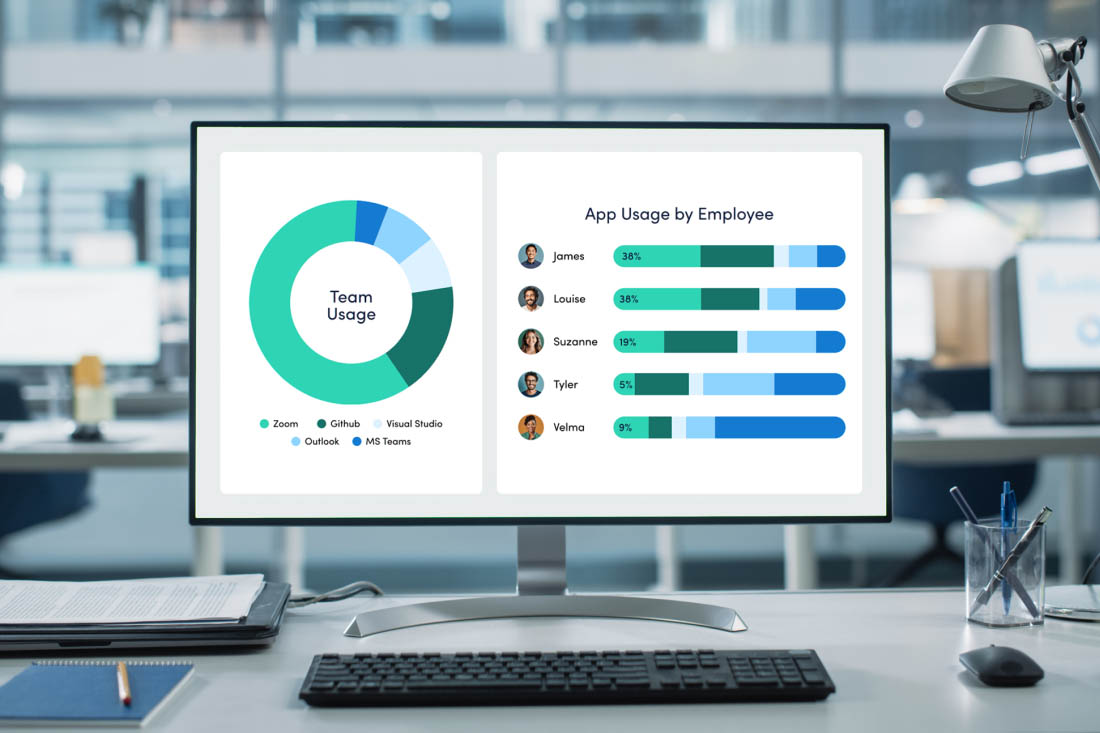COVID-19 forced many organizations to pivot to a distributed workforce model (whether they wanted to or not). Coupling the challenges of social distancing, quarantines, and hybrid workspaces, brands struggled to maintain any sense of normalcy – let alone improve agility. The wheels were already set into motion as outsourcing tasks to contractors and temp workers had become commonplace. Yet, the speed and scale at which workplace shifts happened during the pandemic were unprecedented.
Although pandemic restrictions are starting to lift in many areas, almost 50% of companies have committed to fully or partially remote work environments permanently. To maintain a happy and productive distributed workforce, organizations must ensure they have processes in place to counteract the challenges of these new working norms. Here is how the best teams make that happen.
Agility means accepting change
When a traditional office team moves to a distributed workplace model, they face a high degree of disruption. To remain agile, they must re-learn how to collaborate with peers in a remote capacity. This process becomes a dance (of sorts) – recognizing old routines and habits and porting them over to new circumstances.
The work itself doesn’t change, but distributed teams must accomplish the same level of synergy and immersion online as they do in person. True agility comes from moving seamlessly between chat programs, project management apps, cloud documents, and other digital resources to accomplish assigned tasks quickly.
All while doing so as part of a cohesive group.
Distributed workforces require flexibility
One of the biggest realizations of the new workplace paradigm is that keeping top talent requires flexibility. Before the pandemic, most companies expected that employees would be available 40 hours per week, and within the same prescribed working hours, traditionally 9-5.
However, the COVID-19 outbreak complicated everything by merging home life and work life quickly. To combat this issue, progressive organizations must change their vision of what a “normal” work week looks like.
This new model requires management to have a deep understanding of each employee’s specific personal and professional needs. For example, some team members may be distracted during the day with children or pets at home, while others might do their best work during off-peak hours.
In the new distributed workforce, employee availability may ebb and flow in relation to their health, that of their family members, and other obligations outside of work.
When assigning projects, be mindful of time zone differences, team dynamics, and each tasks’ size and complexity. Create work shifts that accommodate employee obligations instead of forcing mandatory schedules. Be aware and respectful of cultural differences and use workload management tools to distribute tasks and better allocate resources.
ActivTrak’s Workload Balance tool makes it easy to spot which employees may be overloaded and those who have the bandwidth to do more. Keeping this balance in check not only makes for a healthier workforce, but can increase engagement and productivity as well.
With the correct information, management can focus on making decisions that are the least disruptive for everyone involved.
Agile teams – some assembly required
While necessity dictated the rapid expansion of distributed workforces, improved agility requires more than a Zoom account and a network login. To increase engagement, consider scheduling regular check-ins with your team members to offer support, answer questions, and assess overall progress.
Think about how you build your teams as well. You should recognize each employee’s skill set and assign them tasks that complement their strengths. Find out what they like doing best and give them the chance to do more of it. Studies show engaged employees are not only more agile, but typically also account for lower turnover rates.
ActivTrak’s Activity Breakdown report helps managers to assess daily productivity for each employee and break down progress towards individual and team goals. This type of analysis can identify top performers’ characteristics and offer insight into helping others achieve the same high output.
Another tip here is to remove roadblocks or congestion points proactively. Break tasks down to their smallest components to widen the pool of qualified employees and improve agility. Keep in mind that employees don’t need to be experts on everything – just competent for the particular assignments you give them.
Also, be vigilant about documenting new tasks to avoid ambiguity and inefficient processes. Map out project workflows with step-by-step directions and actionable advice. Doing so can minimize confusion, reduce anxiety, and help streamline operations.
Lastly, recruit with agility in mind. Look for candidates who are disciplined, focused, and already possess solid communication skills. Applicants having previous remote or hybrid work experience are a plus as they already have experience and comfort with some of the challenges posed by this work arrangement. Not everyone is cut out for a distributed work environment. However, those with the proper skill set, experience, and personality traits can make a great fit.
Simplify distributed workforce communication
One of the easiest ways to improve workplace agility is by simplifying the communication process. Decide which chat, video conferencing, and distributed data management tools will be used and when each is appropriate. Again, it can be helpful to document guidelines around these norms in your organization or within specific teams.
Watch out for impediments such as time zone differences, cultural, and language barriers that could turn minor misunderstandings into major problems. Prioritize messaging clarity and transparency above all else.
Never assume that all distributed workforces will be comfortable with technology.
There will be different learning curves and comfort levels with each application. Make the transition easier by offering formal training sessions and advice to avoid sticking points.
ActivTrak’s Workforce Insights report makes it easy to spot which communication tools are used most and those that may be falling to the wayside. Doubling down on what is working not only saves money, but helps teams remain agile and productive in distributed workforce environments.
Encourage a connected culture
Since in-person office collaboration is removed from distributed workforces, it’s essential to find other ways to build connections when team members are working from different locations. When employees do meet, usually by videoconference, there can be more focus on work vs. making small talk.
Thus, many distributed employees report feeling lonely. A lack of face-to-face interaction often creates a struggle for workers to find themselves within the group dynamic. To balance out the scales, managers must take an active role in making employees feel welcomed and engaged.
Set aside the first few minutes of each meeting for “water cooler” talk and create breakroom interactions using online communication tools. Consider adopting a “video-first” culture to foster meaningful interactions and use audio-only or text-based apps sparingly.
Video adds a human element to conversations and helps participants pick up on visual cues, body language, and gestures they would otherwise miss. These subtle clues often mean the difference between effective communication and harmful misunderstandings.
Establish boundaries to improve agility
Distributed workforce employees face a constant interruption of family and other home office distractions and may stumble without proper supervision. Left unchecked, this “drifting” can lead to confusion, frustration, and burnout.
Instead of leaving them to wonder, clarify what is expected of remote employees. You can use this free remote workforce template to spell out required availability, how to check-in, mandatory meeting requirements, and who to turn to for help.
Establishing these remote and distributed workforce guidelines can reduce anxiety and build trust so that distributed teams can deliver on their commitments, no matter where they reside.
The key for distributed teams is to identify their unique remote work challenges and brainstorm resolutions to those issues as a group.
Making distributed workforces work
The growing popularity of distributed workforces is happening now and pushing organizations to adopt new flexible work models. By implementing sound strategies, organizations of all sizes can tap into bigger pools of qualified talent and stay competitive. The right balance of digital tools and human interaction boosts productivity and creates an agile workforce that can succeed from anywhere.
Take the next step:
- Gain immediate visibility into your distributed workforce across people, process, and technology by creating a FREE ActivTrak account today.
- Get expert advice and proven strategies for strengthening your distributed workforce by visiting ActivTrak’s Productivity Lab.
- Download our comprehensive free ebook: Remote Workforce Management: Tips, Tricks, and Tactics
About ActivTrak
ActivTrak helps companies unlock productivity potential. Our award-winning workforce analytics and productivity management software provides expert insights that empower people, optimize processes, and maximize technology. Additionally, with data sourced from more than 9,500 customers and over 450,000 users, ActivTrak’s Workforce Productivity Lab is a global center for ground-breaking research and expertise that helps companies embrace and embody the future of work.





